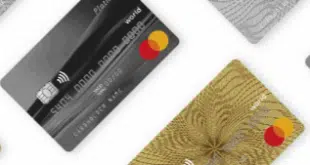By Jim Daly
Plenty of Americans are still getting free checking, but not as many as last year, according to new findings from the American Bankers Association. The Washington, D.C.-based trade group’s latest annual consumer survey says 55% of bank customers spend nothing each month for banking services and ATM access. A year ago, 59% of consumers reported paying nothing each month for their accounts and ATM usage.
“It does demonstrate that free checking is still available; it’s not as widely available as it once was,” Nessa Feddis, the ABA’s senior vice president and deputy chief counsel for consumer protection and payments, tells Digital Transactions News.
A number of banks eliminated free checking or otherwise increased fees in 2011 and 2012 to improve their profitability after the Dodd-Frank Act’s Durbin Amendment debit card regulations took effect. Those regulations that took a big bite out of the debit interchange revenues of covered financial institutions, those with $10 billion or more in assets. The ABA says the loss of interchange is the likely reason the number of consumers reporting they get free banking services slipped by four percentage points this year.
“I think it is widely attributable to the Durbin Amendment,” says Feddis, noting that the amendment “cut in half” regulated banks’ interchange revenues. She adds that a 2010 study by research firm Celent LLC found that it costs banks $250 or more a year to maintain a consumer checking account.
Market-research firm Ipsos Public Affairs surveyed 1,000 U.S. adults in July for the newly released study, which the ABA has done since 1998. Researchers found that 10% of respondents said they pay $3 or less a month in bank and ATM fees; 8% pay $4 to $6; and 4% pay $6 to $9. Fourteen percent said they pay $10 or more per month in fees, up from 9% last year. Exactly why the number of consumers paying high fees went up is unclear, according to Feddis.
Meanwhile, many consumers continue to dodge fees by using only ATMs operated by their own banks. “Most people avoid ATM fees because they can use their banks’ ATMs for free,” says Feddis.
Feddis isn’t sure if the downward trend in the number of consumers getting free checking will continue. It easily could decline further if the decision by U.S. District Judge Richard J. Leon that overturned the Federal Reserve Board’s regulations implementing the Durbin Amendment holds up on appeal. Leon ruled last month that the Fed failed to follow Congress’s intent for debit cards when its rule took effect in stages in 2011 and 2012. Regarding interchange, Leon said the Fed’s approximately 24-cent transaction cap for regulated issuers was too high and indicated that the board’s original idea of a cap in the seven-to-12-cent range was closer to the mark set by Congress.
The Fed last week said it would appeal Leon’s decision, which was the result of a lawsuit by retail trade groups and some merchants against the Fed. Even though the Fed is asking for an expedited appeal process, the case still could take 18 to 24 months to resolve at the appellate level, and then it could go to the Supreme Court, Feddis notes. Thus, the Durbin Amendment may continue to exert pressure on free checking, but how much is unclear. “Who knows?” says Feddis.




